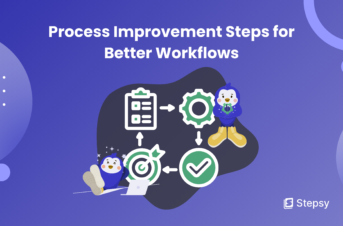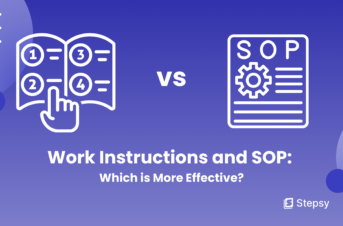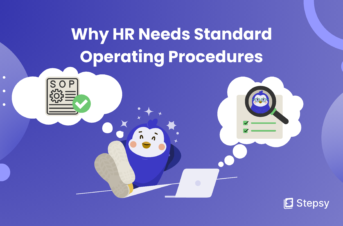Promoting Knowledge Sharing in the Workplace
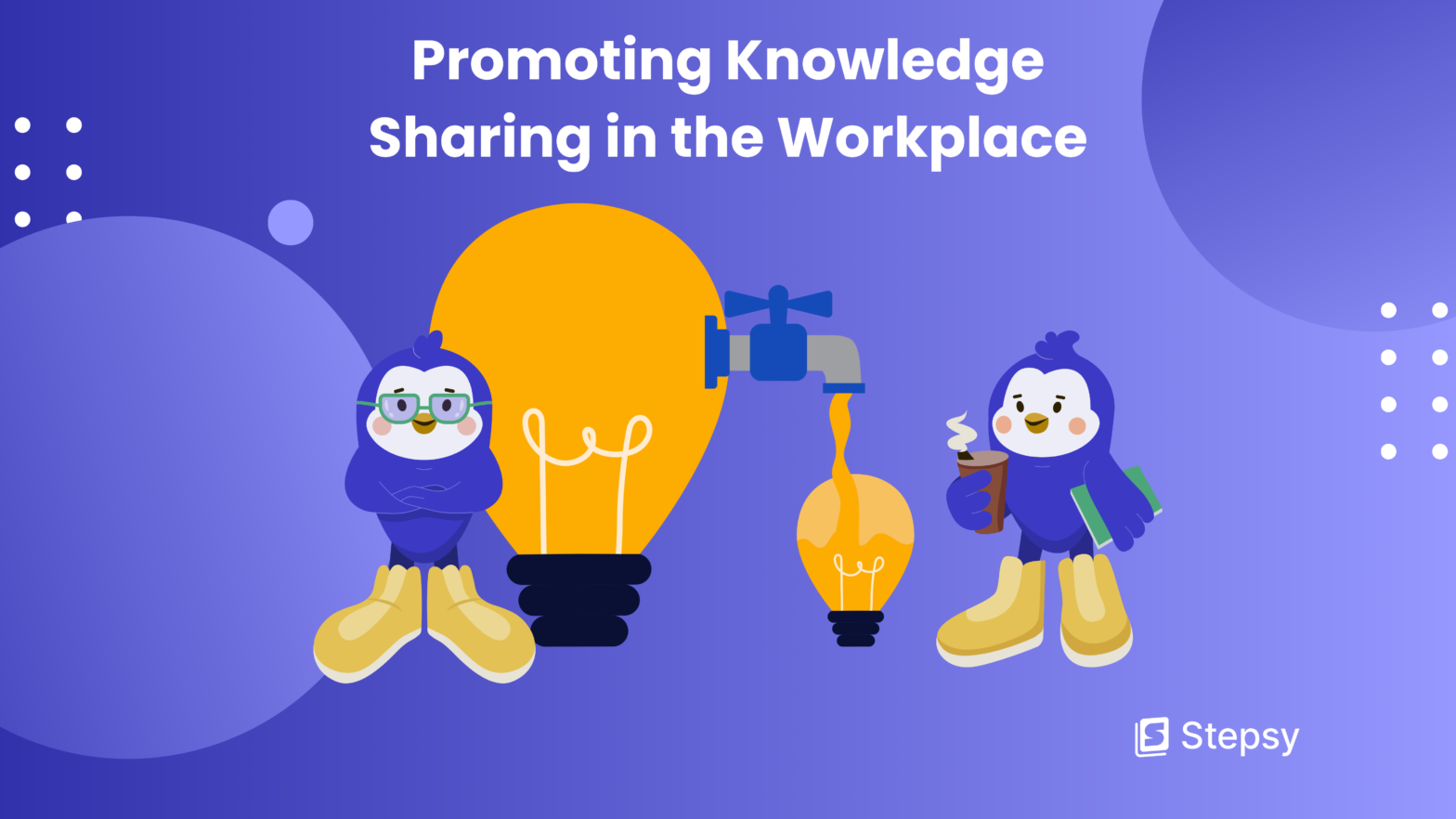
 Iryna Smuk • 25 Jun 2024
Iryna Smuk • 25 Jun 2024
Knowledge is the ultimate currency in our dynamic business landscape. But what if that information is locked away in individual minds? It holds limited power. This is where knowledge sharing comes in. It is the act of exchanging information, experiences, and expertise among colleagues.
Not having an effective knowledge-sharing culture costs money. Research shows that the average US-based organization loses anywhere from $2.7 million to $265 million in productivity (depending on its size) per year due to failure to create and implement a knowledge retention system.
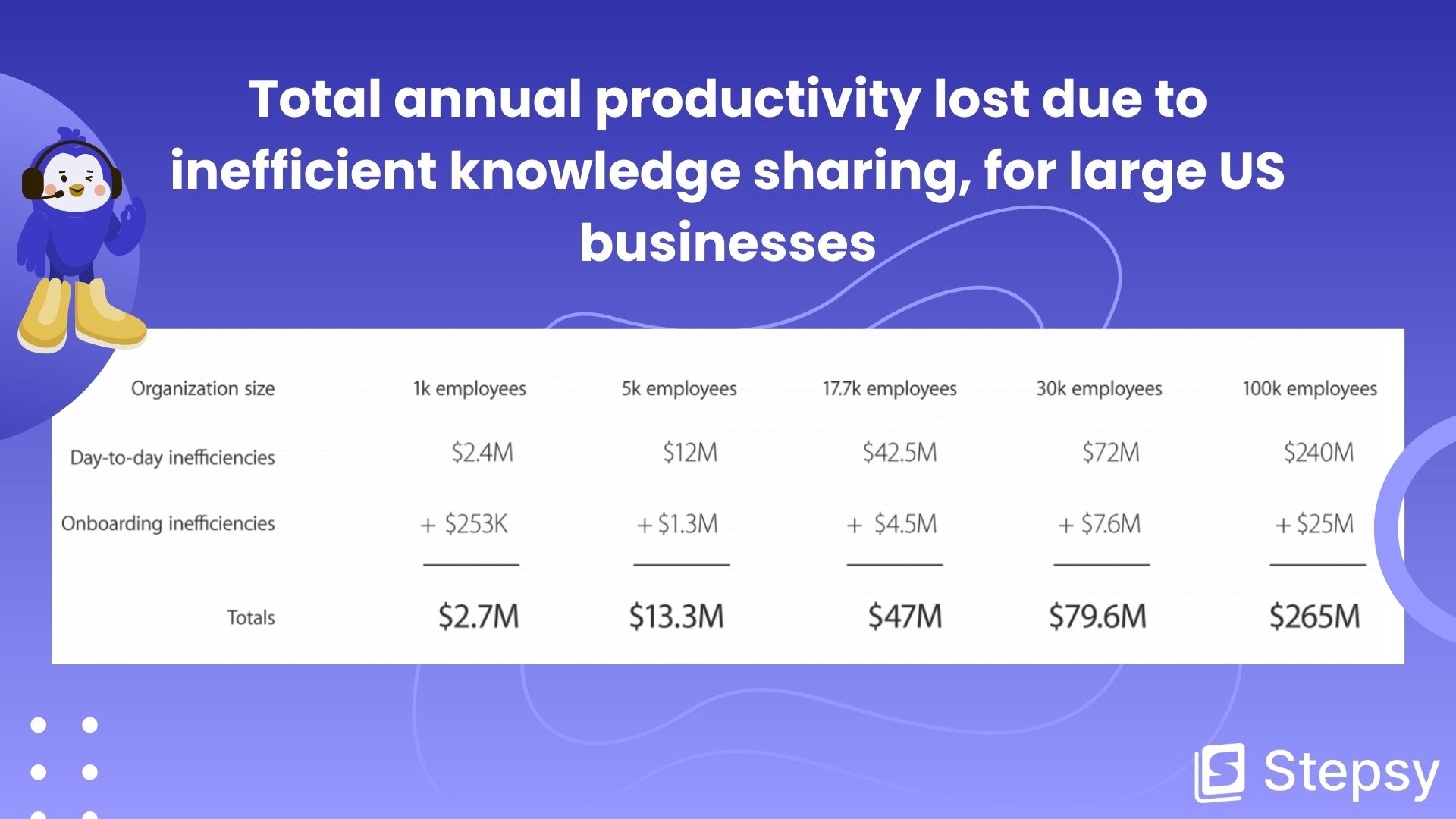
For individuals, sharing their knowledge and expertise cultivates a sense of empowerment and fulfillment. It provides opportunities to showcase competence, learn from others, and contribute meaningfully to collective goals.
However, the benefits of knowledge sharing extend beyond individual growth to encompass organizational success. Businesses that prioritize and facilitate a culture of sharing are better equipped to innovate, adapt to change, and stay ahead in competitive markets.
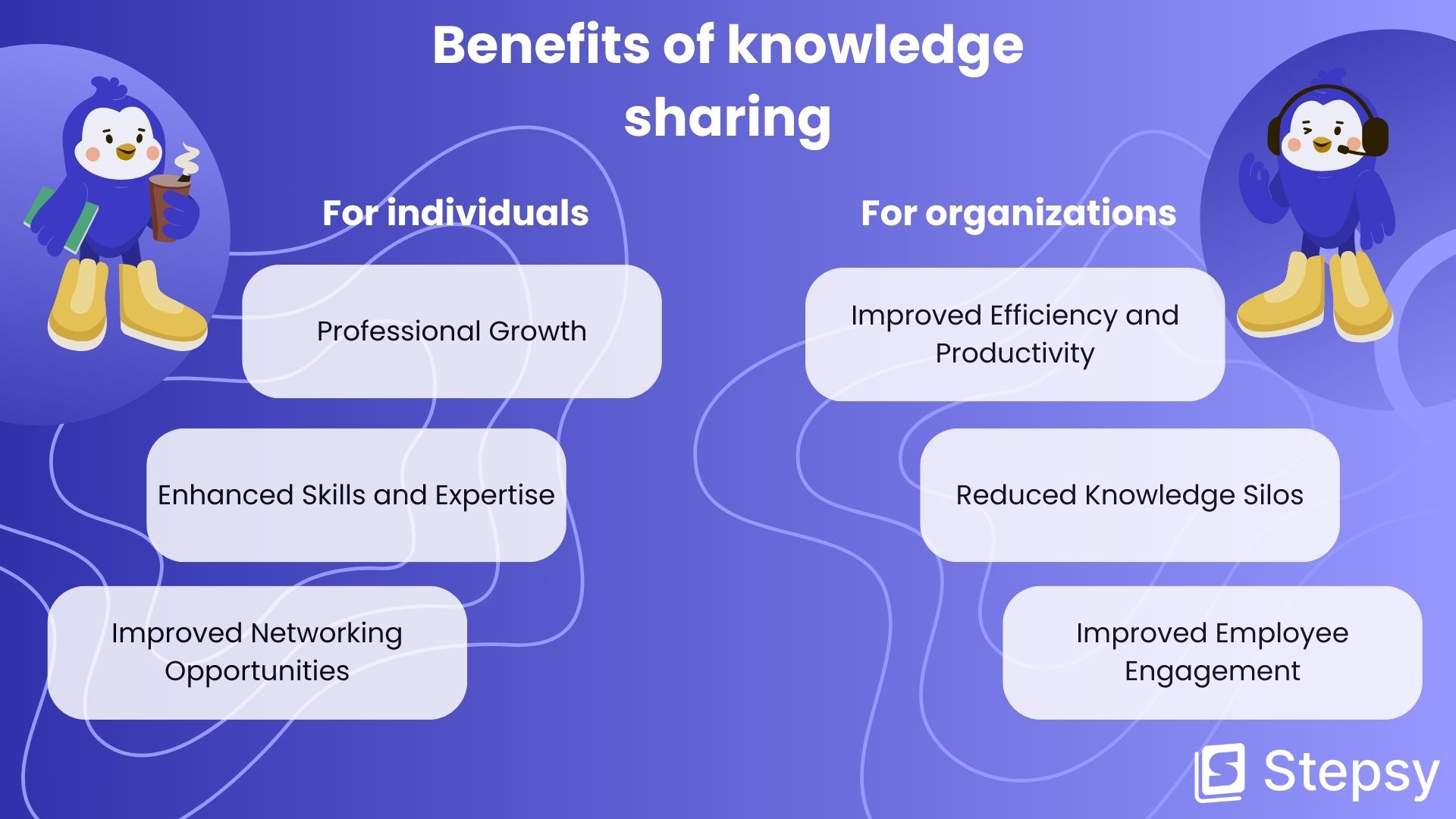
So, let’s dive into the best ways and strategies to foster a culture of knowledge sharing.
Establishing a Knowledge-Sharing Culture in the Workplace
Leadership Support and Involvement
The key to the success of any knowledge-sharing initiative is the active support and involvement of organizational leadership. Leaders play a pivotal role in setting the tone, establishing priorities, and modeling behaviors that encourage more knowledge sharing.
Leaders also must actively communicate the importance of expertise sharing and reinforce its value to the organization’s mission and goals. This can be done through regular communication channels, where leaders can articulate the advantages of knowledge sharing and highlight examples of its impact on business outcomes.
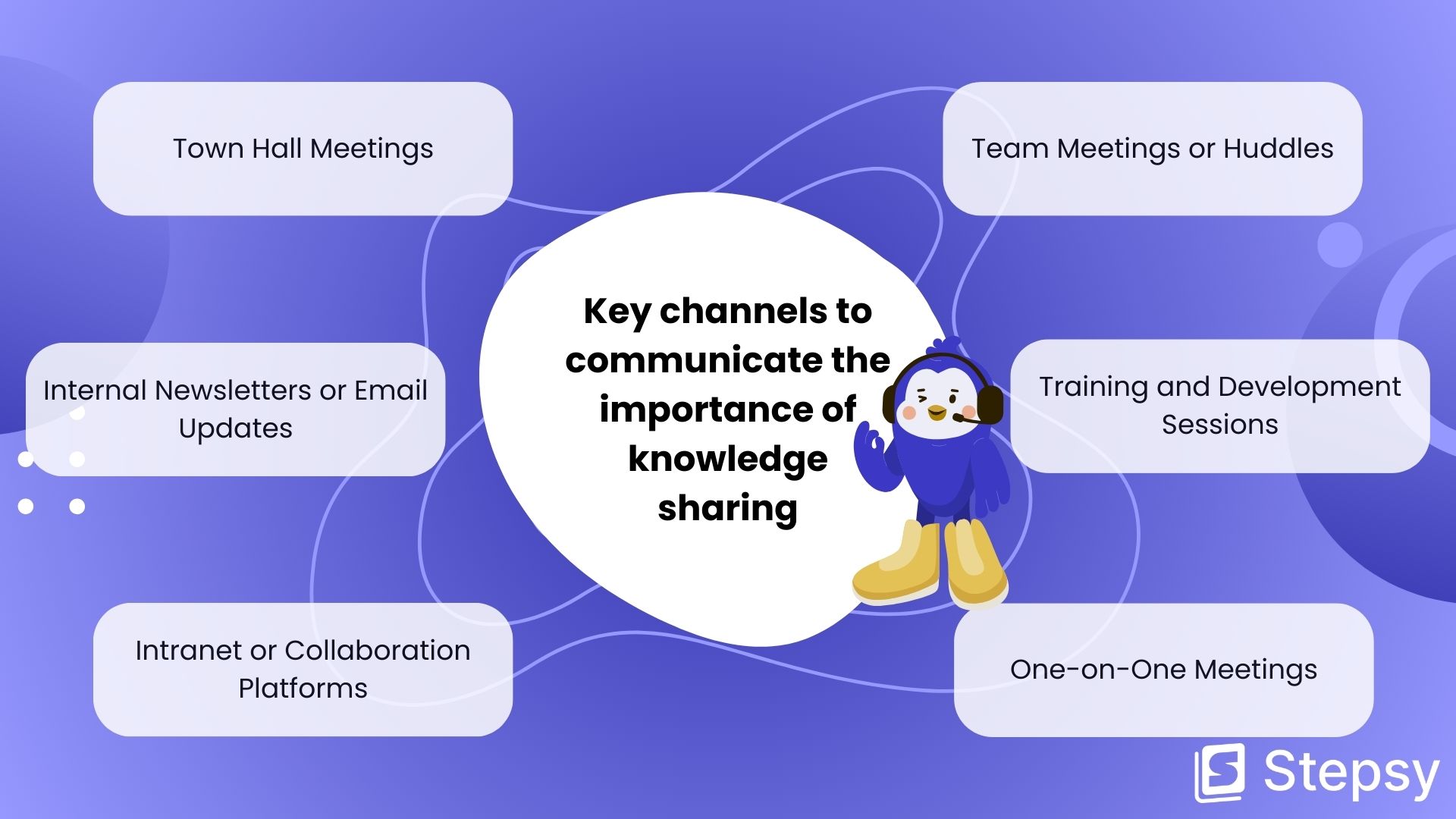
In addition to communication, leaders can also lead by example. They should actively participate in knowledge-sharing activities themselves. When team members see their leaders engaging in this process, it sends a powerful signal that it is not only acceptable but also expected behavior within the organization.
Creating an Open Environment
At the heart of effective knowledge sharing lies the cultivation of an open and trusting environment among colleagues. Businesses must create an environment where workers feel safe and encouraged to spread their knowledge without fear of judgment or reprisal.
A sense of belonging and collaboration is fostered when staff members feel comfortable expressing their ideas, discussing their experiences, and seeking help from their peers. It also strengthens teamwork and drives better outcomes for the businesses.
Implementing a Knowledge Sharing System in the Workplace
Technology Solutions
Technology plays a pivotal role in facilitating knowledge sharing within organizations. Leveraging the right knowledge-sharing tools and platforms allows businesses to create a seamless and efficient ecosystem for sharing, accessing, and managing information across teams and departments.
Here are some technology solutions that empower organizations on their way to implementing a culture, where knowledge is shared.
- Collaboration Software: It provides employees with centralized platforms for communication, file sharing, and project collaboration.
- Knowledge Management Systems: Such systems are specialized platforms designed to capture, coordinate, and disseminate knowledge within an organization.
- Learning Management Systems: They include all the tools required to create, deliver, and track online training as well as build internal knowledge bases on the platform.
- Enterprise Social Networking: These platforms provide organizations with internal social media-like platforms for fostering collaboration and knowledge sharing.
- Guide Builder: It serves as a centralized knowledge repository, consolidating diverse sources of information into one easily accessible platform. They offer interactive documentation capabilities, such as easy creation and sharing of instructions among employees.

However, to maximize the effectiveness of the collective knowledge base, organizations must integrate them seamlessly into employees’ daily workflows. Companies should provide training and support as well as establish clear processes and guidelines to make sure that workers are proficient in using these tools effectively.
Structured Sharing Practices
Utilizing technology solutions is not that effective without structured sharing practices. They provide a framework for systematically capturing, documenting, and disseminating information, ensuring effective knowledge hoarding across teams and departments.
The structure of your organization’s accumulated knowledge should be centralized in a way that necessary information, both explicit and tacit, is accessible to relevant team members at all times — even when knowledge sharing is not taking place in real-time. It is also known as creating a single source of truth (SSoT). That is where documentation comes in.
Formal documentation processes and repositories serve as essential tools for capturing and preserving organizational knowledge in a structured and accessible format. These repositories can take various forms, such as wikis, intranet portals, guide platforms, or document management systems, depending on the organization’s preferences and needs.
Incentives and Rewards
Recognizing Contributions
Another key step toward a culture that promotes knowledge-sharing in the workplace is recognizing and rewarding contributions. As a result, employees will be more motivated to actively participate and engage in sharing their expertise and insights.
Here are some types of recognition and rewards for sharing:
- Public Acknowledgment: It is one of the most effective forms of recognition for information sharing. This involves highlighting individuals or teams who have made significant contributions to knowledge retention initiatives during team meetings, town hall sessions, or company-wide communications.
- Peer Recognition: This involves acknowledging and celebrating contributions to knowledge sharing from colleagues within the organization. Such initiatives could take the form of peer-to-peer recognition programs or platforms where employees can nominate and recognize their peers for their contributions to information retention.
- Formal Awards and Incentives: Organizations can establish formal awards and incentives to recognize individuals or teams who consistently demonstrate excellence in knowledge sharing. Consider implementing awards such as “Knowledge Champion of the Year” or “Top Contributor Award,” accompanied by some tangible rewards.
- Professional Development Opportunities: Opportunities such as training workshops, conferences, or certifications can also serve as rewards for information sharing. Organizations can demonstrate a commitment to supporting workers’ growth and development by investing in their professional development.
The influence of incentives on staff members’ motivation cannot be overstated. Let’s take a look at a table illustrating the impact of incentives on employees’ motivation:
| Impact of Incentives on Motivation | Description |
|---|---|
| Increased Engagement | Incentives can increase employee engagement, as they are motivated to actively spread valuable knowledge to earn rewards. |
| Fostered Collaboration | Workers are more likely to collaborate and share information with their peers when they know that their contributions will be recognized and rewarded. |
| Retention of Talent | Incentives can help organizations retain top talent by recognizing and rewarding employees for their knowledge-sharing efforts. |
| Improved Employee Morale | This recognition fosters a sense of accomplishment and pride, leading to higher levels of job satisfaction and morale. |
| Encouraged Innovation | When workers know that their innovative contributions will be rewarded, they are more likely to think outside the box and explore new solutions to challenges. |
Building a Community of Practice
While technology and incentives play an essential role, a truly successful knowledge-sharing culture thrives on the foundation of strong communities of practice (CoPs). These communities bring together individuals with shared interests, expertise, and goals. Additionally, they provide a platform for ongoing learning, collaboration, and knowledge exchange.
Furthermore, by bringing together individuals from diverse backgrounds and disciplines, these communities foster cross-pollination of ideas, sparking new insights and perspectives that drive innovation and problem-solving. CoPs serve as catalysts for sustained tacit and explicit knowledge distribution within a company.
Here are some examples of successful communities of practice:
- Sales CoP: A group of salespeople from different regions or product lines coming together to share best practices for closing deals, objection handling, and building client relationships.
- Engineering CoP: A group of engineers working on different projects. They share knowledge on new technologies, design solutions, and troubleshooting challenges.
- Customer Service CoP: A group of customer service representatives. They share best practices for handling customer inquiries, resolving complaints, and exceeding customer expectations.
- Learning and Development Cop: A group of employees from across the organization to share knowledge, skills, and resources related to professional development and training.
Training and Development
Skills Enhancement for Effective Sharing
In pursuing effective knowledge sharing, organizations must prioritize skills enhancement initiatives that empower employees with the necessary communication and knowledge management skills. It is important to invest in training programs cultivating these essential competencies. For example, our friends from Growth Kitchen—a performance marketing agency for SaaS—shared that introducing internal workshops on content creation and distribution not only improved their team’s communication but also fostered a stronger culture of sharing insights and strategies across departments. Thus, businesses that equip their workforce with the tools and techniques required to share knowledge effectively contribute to its success.
Let’s take a look at some qualities that should be trained in workers so they can become skilled knowledge sharers:
- Communication and Presentation Skills: Training programs can equip employees with the skills to tailor their communication style. They convey information clearly and concisely.
- Knowledge Management Skills: Training on knowledge capture techniques, content organization strategies, and utilizing knowledge management systems can empower individuals to contribute high-quality and easily accessible knowledge.
- Storytelling Skills: Training in storytelling techniques can help employees craft compelling narratives that effectively communicate the value and impact of their knowledge.
Moreover, continuous learning is essential for fostering a culture of sharing knowledge in the workplace. As technologies evolve, markets change, and new challenges emerge, staff members should continuously update their skills and knowledge to remain relevant and effective in their roles.
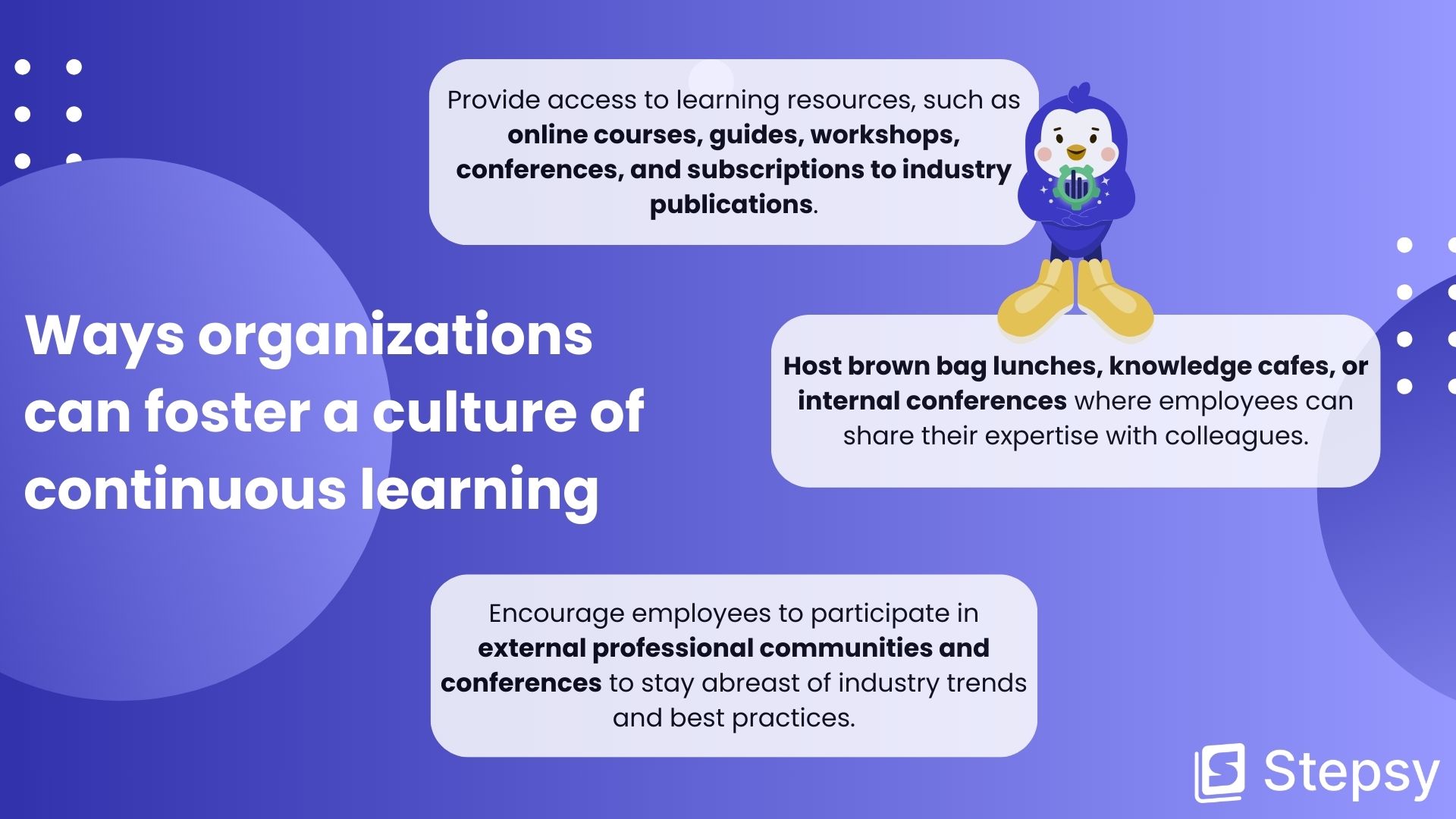
Feedback and Continuous Improvement
Once the knowledge-sharing system is working, the next step is setting up feedback mechanisms to ensure that it is effective and impactful. From employees’ feedback, organizations can enhance the effectiveness of knowledge-sharing initiatives.
Here are some practices in how organizations can establish feedback mechanisms:
- Gather Feedback: Regularly solicit feedback from employees on the effectiveness of existing knowledge-sharing initiatives. Businesses can do it through surveys, focus groups, or anonymous suggestion boxes.
- Evaluate Knowledge Management Systems: Assess the usability and effectiveness of your knowledge management system (KMS).
- Monitor Knowledge Sharing Activity: Track key metrics like participation rates in knowledge-sharing events, contributions to the KMS, or utilization of collaborative tools.
- Conduct Knowledge Audits: Periodically conduct audits to assess the quality and accuracy of the knowledge stored within the KMS.
Collected feedback can be used to implement iterative improvements to their knowledge-sharing strategies. It is important to analyze it and identify areas for improvement. Based on this data, organizations can implement changes and solutions. Besides, continuously iterating and evolving knowledge-spreading practices confirm that they remain a powerful driver of long-term success.
Conclusion
Hence, knowledge sharing in the workplace holds immense potential for fostering collaboration, driving innovation, and achieving organizational progress. We have explored key strategies for promoting knowledge sharing: leadership support, and involvement, creating an open environment, leveraging technology solutions, structured sharing practices, recognizing contributions, skills enhancement, feedback, and continuous improvement.
Looking towards the future, the evolution of knowledge sharing in the workplace promises exciting possibilities. Emerging technologies like artificial intelligence and machine learning can further enhance knowledge capturing, management, and personalized learning experiences. So, remember that the most successful organizations will be those that embrace knowledge sharing as a core value!
